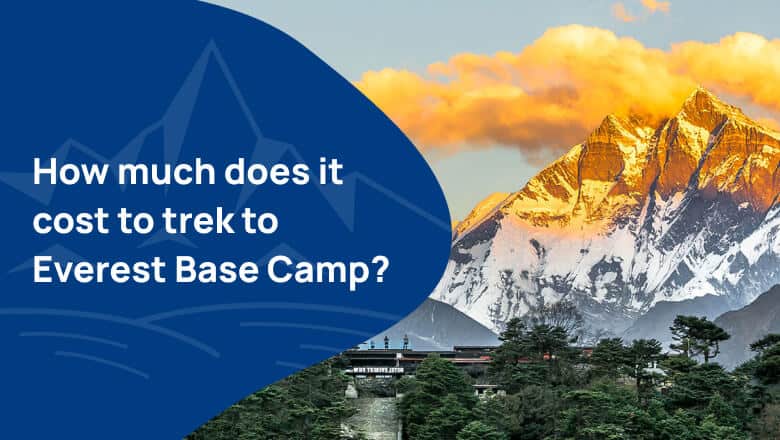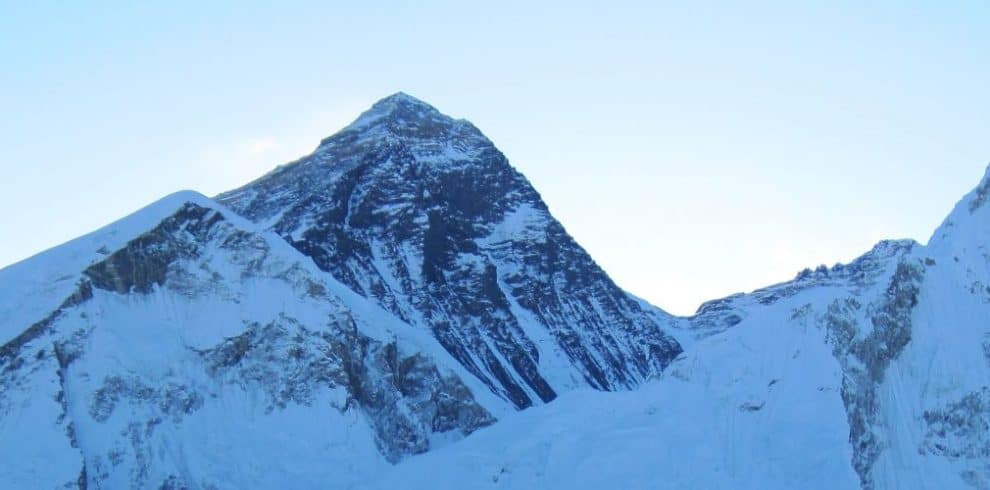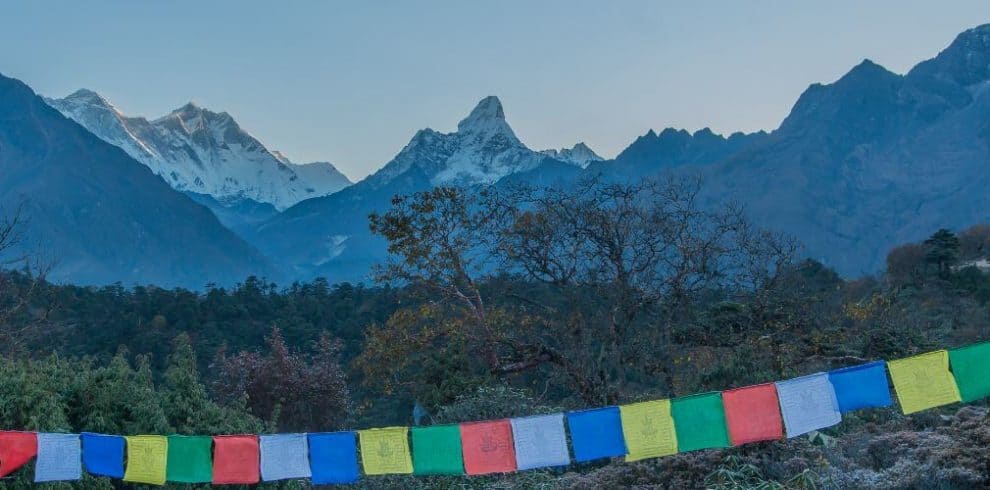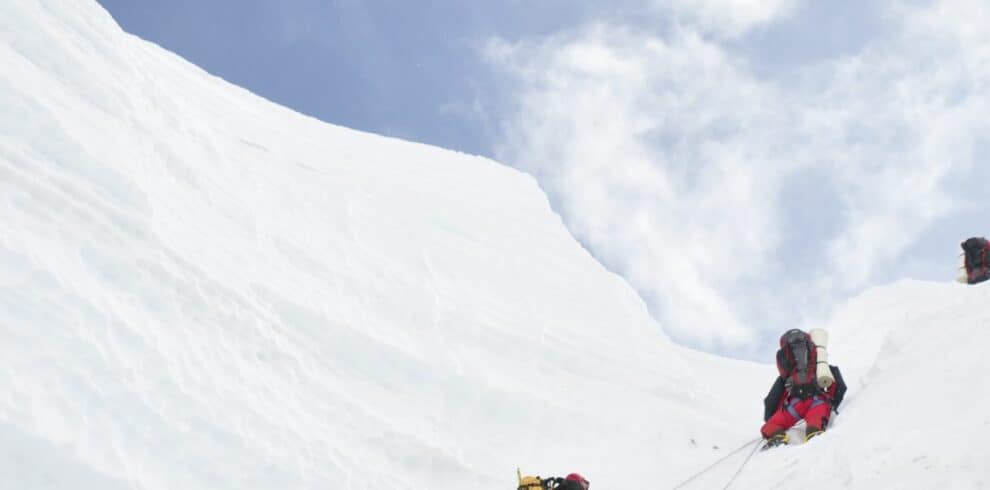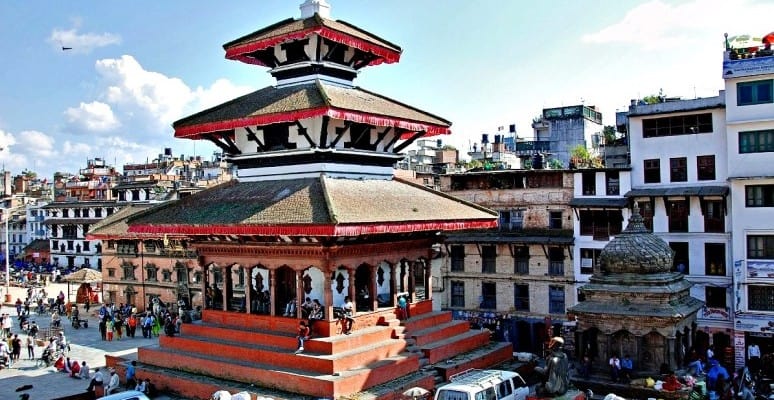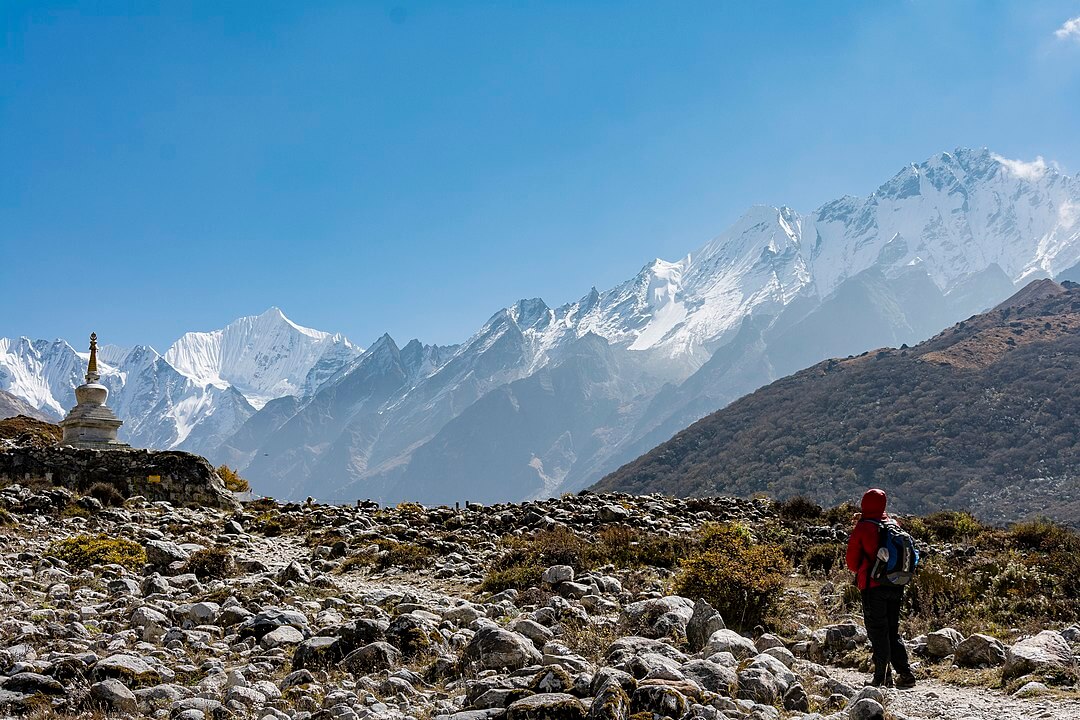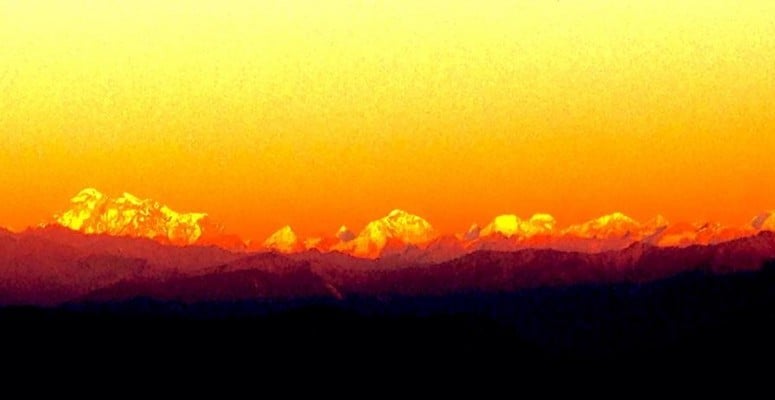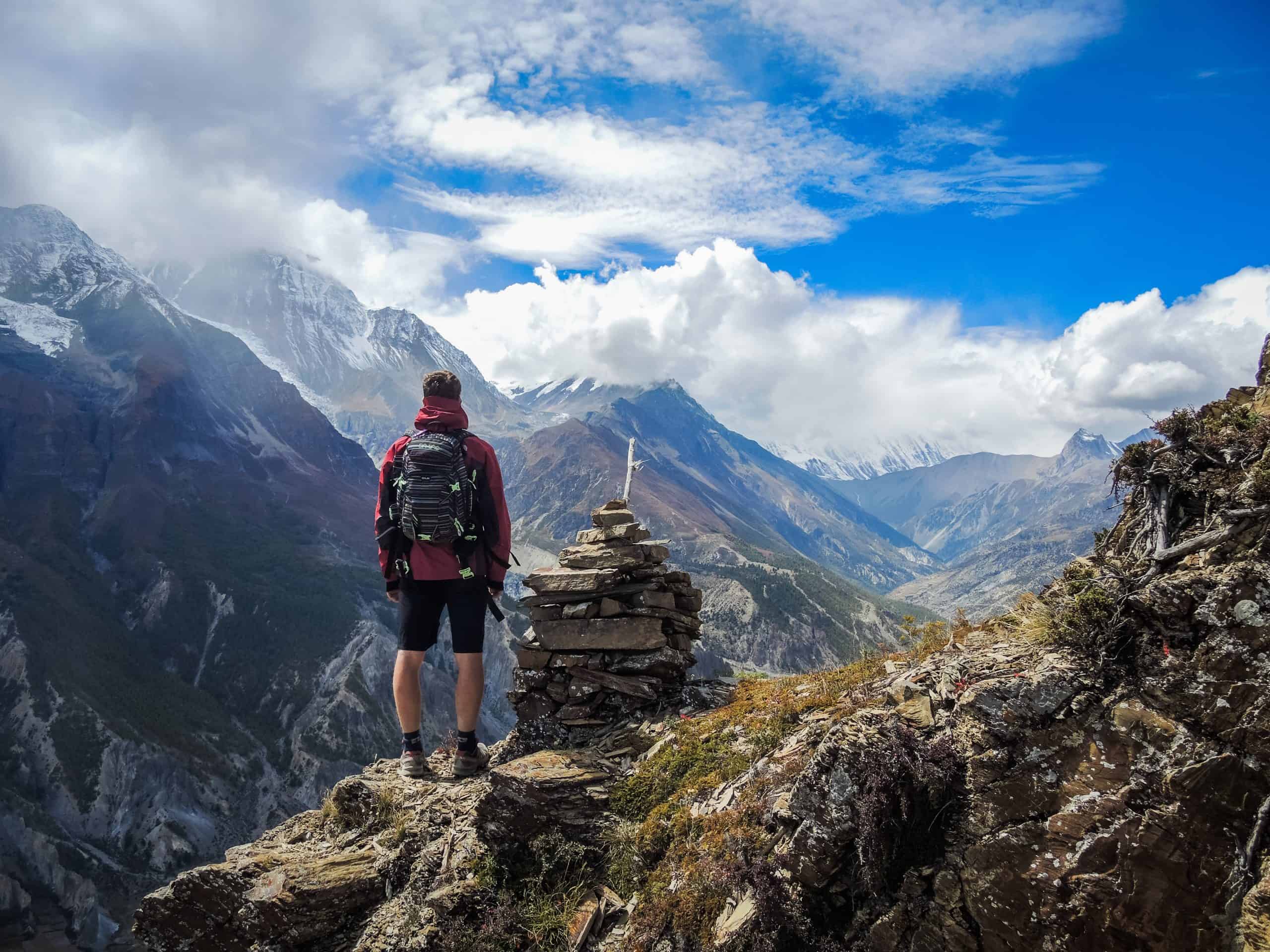How much does it cost to trek to Everest Base Camp? Trekking to Everest Base Camp is one of Nepal’s most popular and challenging treks, attracting thousands of trekkers each year. The trek takes you through stunning landscapes, traditional Sherpa villages, and up to the base camp of the highest mountain in the world. It’s an experience of a lifetime that you will never forget.
As an experienced trekker of Nepal, I know firsthand how exciting, and life-changing trekking to Everest Base Camp can be. However, the cost of the trek can be a concern for many travelers. That’s why I want to share a comprehensive breakdown of what you can expect to pay and some tips on reducing costs.
Contents
- Average Cost of Everest Base Camp Trek
- Everest Base Camp Trek
- Factors Affecting the Cost to Go to Everest Base Camp
- 1. Cost in Kathmandu
- 2. Cost of Transportation
- 3. Cost of Nepal Visa
- 4. Cost of Trekking Permits
- 5. Cost of Accommodation on Everest Base Camp Trek
- 6. Cost of Food & Water on Everest Base Camp Trek
- 7. Cost of Guide & Porter on Everest base camp trek
- 8. Cost of Travel Insurance
- 9. Cost of Trekking Equipment
- 10. Time of the Year
- Types of Trek Operators
- Tips for Reducing the Cost of Everest Base Camp Trek
- Ready to Book Trips Now?
- Everest Base Camp Charity Yoga Trek
- Mount Everest Expedition (8,848 M)
- Jiri to Everest Base Camp
Do you have any question about trip to Nepal?
Tell us about your trip to Nepal and what you expect from it. We will answer your questions in 24 hours and help you design a trip with a comfortable itinerary to meet your needs best.
Average Cost of Everest Base Camp Trek
Based on my experience and research, the average cost of trekking to Everest Base Camp is around $1200 to $3000 for a 14-16 day trek. This cost includes all major expenses, such as flights, permits, guide and porter fees, accommodation, food, and equipment rental. The price can be higher or lower depending on the factors mentioned above.
Now, let’s break down the cost into various areas, which we will discuss briefly. This is an estimated breakdown of what international luxury and mid-range operators typically spend for your trekking trip.
If you’re planning to go on the Everest Base Camp Trek but want to know more about it first, we have a detailed Everest Trekking guide that can help. It has all the information you need to know before you start your journey. Check it out and learn from our expertise to make your trip a success.
Book an Everest Base Camp Trek Now!
Factors Affecting the Cost to Go to Everest Base Camp
1. Cost in Kathmandu
Kathmandu is the gateway to the Everest region, and it’s where you will need to stay before and after your trek. The expenses associated with Kathmandu include transfers to and from the airport, hotel accommodation, and any additional costs for exploring the city of Kathmandu.
You can personalize your trip if you want to be within your budget by selecting hotels that range from economical to luxurious 5-star hotels like Marriott. The accommodation costs vary from US $10 to US $450 per night or more. If you decide to go on a day tour during your free time, the cost will be between US $60 to US $120, depending on your chosen services.
2. Cost of Transportation
Another factor that can affect the cost is the mode of transportation you choose. If you take a flight from Kathmandu to Lukla, the starting point of the trek, the cost will be higher than if you take a bus from Kathmandu to Jiri and then trek to Lukla. The latter option is also a longer and more challenging route, but it can save you money.
On average, you can expect to pay anywhere from US$150 to US$400 for a one-way flight but keep in mind that flights are subject to weather conditions and can be delayed or cancelled.
Private Car: NRS 10,000 for 3 person
Private Jeep: NRS 14,000 for 5-7 person
Private Hiace: NRS 18,000 for 12-14 person
3. Cost of Nepal Visa
You will need a visa to enter Nepal, which is an easy process. You can get the on-arrival visa at Tribhuvan international airport (TIA) in the immigration department.
On-Arrival Visa Fee at Entry Points:
- $30 for a 15-day multiple-entry visa
- $50 for a 30-day multiple-entry visa
- $125 for a 90-day multiple-entry visa
It’s best to get a 1-month visa since itineraries take around 14 to 16 days.
4. Cost of Trekking Permits
To trek to Everest Base Camp, you will need a Sagarmatha National Park permit and a Khumbu Pasang Lhamu Rural Municipality entrance permit.
You can obtain the Solukhumbu regional fee for approximately $20 per person, which can be purchased in either Lukla or Monjo. The National Park entry permit will cost approximately $30, including 13% VAT, and can be obtained in either Kathmandu or Monjo. As for SAARC nationals, the permit fee is only US$12.
5. Cost of Accommodation on Everest Base Camp Trek
During the Everest Base Camp trek, you can expect to stay in teahouses or lodges along the way. Teahouses are basic mountain lodges that offer simple accommodations and meals, and they’re a popular choice among trekkers in the region. The rooms in teahouses are typically small and basic, with twin beds and shared bathrooms. Some teahouses may offer hot showers for an additional fee.
On average, the cost of a teahouse or lodge accommodation can range from around $3 to $10 per night. However, prices may be higher in the peak trekking season (September to November and March to May) or in more remote locations.
6. Cost of Food & Water on Everest Base Camp Trek
The Food prices are higher at higher elevations, and as you get closer to the Everest Base Camp, the prices tend to increase. The cost of a basic meal (such as rice, lentils, and vegetables) can range from around $5 to $10, while more elaborate meals (such as pizza or pasta) can cost anywhere from $10 to $20.
Water is generally available for purchase along the trail, but it’s important to note that the water may only be safe to drink with treatment. It’s recommended that you bring a water treatment system, such as a portable water filter or purification tablets. Alternatively, you can purchase bottled water, but the cost of bottled water increases as you gain elevation. On average, a litre of water can cost around $1 to $4, depending on the location.
7. Cost of Guide & Porter on Everest base camp trek
The cost of a guide and porter on the Everest Base Camp trek can vary depending on the level of experience and expertise of the guide, the services provided, and the length of the trek.
On average, a licensed guide can cost around $25 to $30 per day, while a porter can cost around $15 to $20 per day. It’s worth noting that hiring a guide is not mandatory for the Everest Base Camp trek, but it’s highly recommended for those who are new to the region or prefer the peace of mind that comes with having an experienced local guide.
A guide can provide valuable assistance in planning your trek, navigating the trail, arranging accommodations and meals, and providing valuable insights into the local culture and history. Additionally, a porter can help carry your gear, leaving you free to enjoy the trek and focus on the beautiful scenery.
It’s important to note that while hiring a guide and porter can add to the cost of your trek, it’s a great way to support the local economy and help provide employment opportunities for local residents. Additionally, having a guide and porter can enhance your overall trekking experience by making it easier and more enjoyable.
8. Cost of Travel Insurance
Travel insurance is highly recommended for the Everest Base Camp trek as it can cover various issues, including medical emergencies, evacuation, trip cancellation, and theft or loss of personal belongings.
The cost of travel insurance can range from around $50 to $300, depending on the level of coverage and the length of your trip. It’s important to make sure that your policy includes coverage for high-altitude trekking, as some policies may exclude this type of activity.
When choosing a travel insurance policy, be sure to read the fine print and understand the coverage limits and exclusions. It’s also a good idea to compare quotes from multiple providers to find the best coverage at a reasonable price.
Don’t forget to protect yourself from unforeseen travel mishaps by getting travel insurance. Click here to learn more about the importance of travel insurance for the Everest Base Camp trek.
9. Cost of Trekking Equipment
The cost of trekking equipment for the Everest Base Camp trek can vary depending on the quality and quantity of gear you need. Some equipment may be available for rent in Kathmandu or in the Everest region, while other items will need to be purchased outright.
Here are some estimated costs for common items you may need for the Everest Base Camp trek:
- Trekking boots: $50 to $200
- Sleeping bag: $50 to $150
- Down jacket: $100 to $300
- Thermal base layers: $30 to $100
- Fleece jacket or sweater: $30 to $100
- Trekking pants: $30 to $100
- Gloves and hat: $20 to $50
- Sunglasses: $20 to $50
- Daypack: $30 to $100
- Trekking poles: $20 to $100
These approximate prices can vary depending on the brand and quality of the equipment you choose. It’s worth noting that while some equipment can be rented in Nepal, it’s generally recommended to bring your own well-fitting and comfortable gear to ensure a comfortable and safe trekking experience.
10. Time of the Year
The cost of trekking to Everest Base Camp can vary depending on the time of year. Peak season (October to November) is the most expensive, while low season (December to February) is the cheapest.
Want to know which time of year is the best time to visit Everest Base Camp? Then, check our comprehensive guide on the best time to trek to Everest Base Camp. Discover everything you need to know about planning your perfect trek to the Himalayas, from weather conditions to less crowded trails.
Types of Trek Operators
Choosing the right company for your Everest Base Camp trek can greatly affect the cost and quality of your trip. Here are some options to consider:
A. International Everest Base Camp Luxury Trek Operators
Luxury trek operators offer high-end accommodations and services, such as private rooms, hot showers, and gourmet meals. These companies also provide a high level of comfort and luxury throughout the trek, but they come at a premium price.
B. International Everest Base Camp Budget Trek Operators
Budget trek operators offer more affordable options for travelers but with less luxury and comfort. These companies provide basic accommodations, meals, and services at a lower cost than luxury trek operators.
C. Cheap Everest Base Camp Operators
Cheap operators offer the cheapest options for travelers but with very basic accommodations and services. These companies provide the bare minimum and often cut corners to keep the cost low.
D. Online Travel Agents (OTA)
Online travel agents offer various options from different companies, making it easy to compare prices and services. However, some OTAs may charge additional fees, so be sure to read the fine print.
E. Local Operators
Local operators offer a more authentic experience and can provide more personalized service. They also tend to be more affordable than international companies but may offer different levels of comfort and luxury.
Tips for Reducing the Cost of Everest Base Camp Trek
If you’re on a tight budget, there are several ways you can reduce the cost of trekking to Everest Base Camp:
Here are some tips for reducing the cost of the Everest Base Camp trek:
- Travel during the off-season: The peak trekking season for Everest Base Camp is from March to May and September to November. Traveling during the off-season, such as in December, January, or February, can result in lower costs for flights, accommodation, and trekking permits.
- Join a group tour: Traveling with a group can be a more affordable way to do the Everest Base Camp trek. Group tours often offer discounts on accommodation, permits, and transportation. You can also split the cost of a guide and porter with other members of your group.
- Bring your own gear: Renting gear can be expensive, so if you already own some of the necessary equipment, it can help save you money. Be sure to check that your gear is appropriate for the altitude and conditions on the trek.
- Eat locally: Eating at local teahouses and restaurants can be a more affordable option than eating at Western-style cafes or restaurants. Be sure to bring water purification tablets or a filter to purify water and avoid the expense of buying bottled water.
- Negotiate prices: In some cases, prices for goods and services may be negotiable, especially if you are traveling during the off-season or in a group. Don’t be afraid to ask for a better price, but also remember to be respectful and fair in your negotiations.
- Plan ahead: Booking flights and accommodation in advance can often result in lower prices. It can also be helpful to plan out your itinerary in advance to avoid last-minute expenses and to allow for better budgeting.
By implementing these tips, you can help reduce the cost of the Everest Base Camp trek while still having a safe and enjoyable experience.
When planning your Everest Base Camp trek, it’s important to consider your budget and choose the right company that fits your needs and preferences. Regardless of the cost, this trek is worth every penny and is an experience that you will never forget. I recommend doing your research, planning ahead, and making informed choices to have an enjoyable and cost-effective trekking experience.

